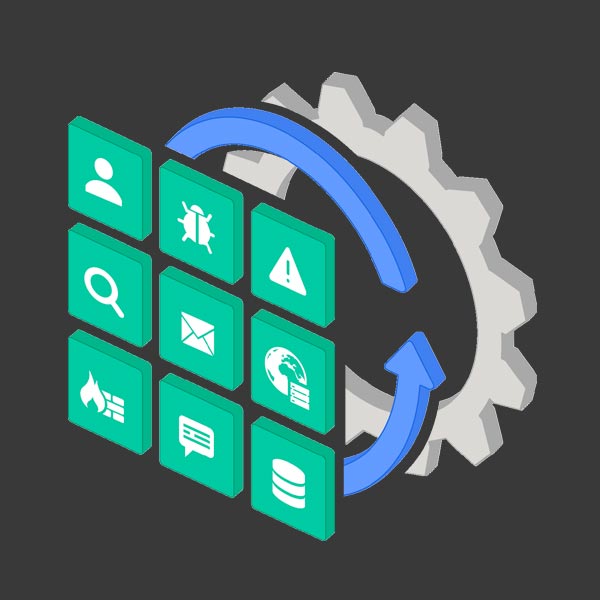Last updated at Tue, 19 Dec 2023 20:59:54 GMT
Considering the sheer number of security tools and threats out there today, security operations can quickly get overwhelming if you don’t have a way to manage the complexities in a systematic fashion. Much of this management between tools and processes is done manually by people today, but this way isn’t exactly sustainable in the long term for security teams — especially coupled with an increasing volume of alerts, events, and security incidents.
That’s why the concept of security orchestration and automation has never been more important.
Security orchestration is a method of connecting disparate security tools and systems to streamline processes and power automation. In this post, we’ll explain how you can begin leveraging security orchestration to streamline and simplify your security operations.
1. Unify Your Tools
Modern security teams rely on a multitude of security tools, systems, and solutions every day. No single tool does it all, nor should it. But the more technologies you bring into your organization, the bigger the headache if you’re managing each individually. And when you have to log into each tool to collect data — especially in the event of a real security incident — your response process slows down, which can jeopardize the efficacy of your entire security organization.
With security orchestration and automation tools like Rapid7's InsightConnect, you can connect all of your security technologies together into a single solution. This way, you no longer have to jump from tool to tool and system to system to address threats like phishing scams or compromised credentials; it all can be done from the convenience of a single solution.
Not only does orchestration accelerate your time-to-response and make your team more efficient, it also helps to extract more value from your security tools and systems. Security orchestration allows you to integrate your tools so tightly that information flows seamlessly from one technology to the next. This means more data can be analyzed, more power can be leveraged from each tool, and the ROI of your entire toolset is maximized. With more and better data, your incident response becomes far more effective.
2. Define Your Security Processes
Once your tools are connected, it’s now time to tell them what to do and the order in which to do it. As we mentioned in a recent eBook, products alone can’t solve security problems, but when they’re tied together with an effective process, the sum is greater than the parts.
A process documents tasks and best practices that connect your people and technology, ensuring that even as new employees join your team and others leave, the workflows that hold your security organization together remain intact.
Many security orchestration solutions come with pre-built workflows and processes based on the most common use cases, so that you can get up and running quickly with popular processes your team may already utilize.
Every company handles security differently, and factors including your industry, compliance needs, and customer expectations may require additional processes to be put in place to secure specific types of data and systems. Using plugins such as the ones InsightConnect offers will help you to implement additional and custom processes with little to no code.
3. Add Automation
Security orchestration powers security automation by streamlining complex processes. Gone are the days when teams could afford to spend hours on rote tasks like data enrichment, alert escalation, and malware investigation (okay, maybe those days never existed…) Today, threats are increasingly sophisticated and prevalent, which leaves very little time for teams to handle tasks manually (nor do they want to). This is where automation comes in, and with orchestration already in place, automation is a cinch.
With your tools and processes tied together, orchestration can automate any number of tasks (especially the most repetitive tasks). In particular, automation can handle many tasks during the detection, analysis, and response phases of incident response, freeing up your team’s valuable time so they can take command of security operations and focus on more strategic security initiatives.
Security Orchestration Has Never Been Easier
Orchestration is at the top of nearly every security team’s agenda these days, and for good reason. Not only does it empower security operations teams to regain control over their time and accelerate time-to-response, it also allows teams to effectively leverage automation. Orchestration and automation go hand-in-hand, but you must first have orchestration in place to take advantage of all that automation can do.
With connect-and-go solutions like InsightConnect, teams can quickly and easily connect their security tools and leverage no-code automation all in a matter of hours, making your team measurably more efficient, productive, and proactive. These days, those are benefits you simply can’t pass up.
